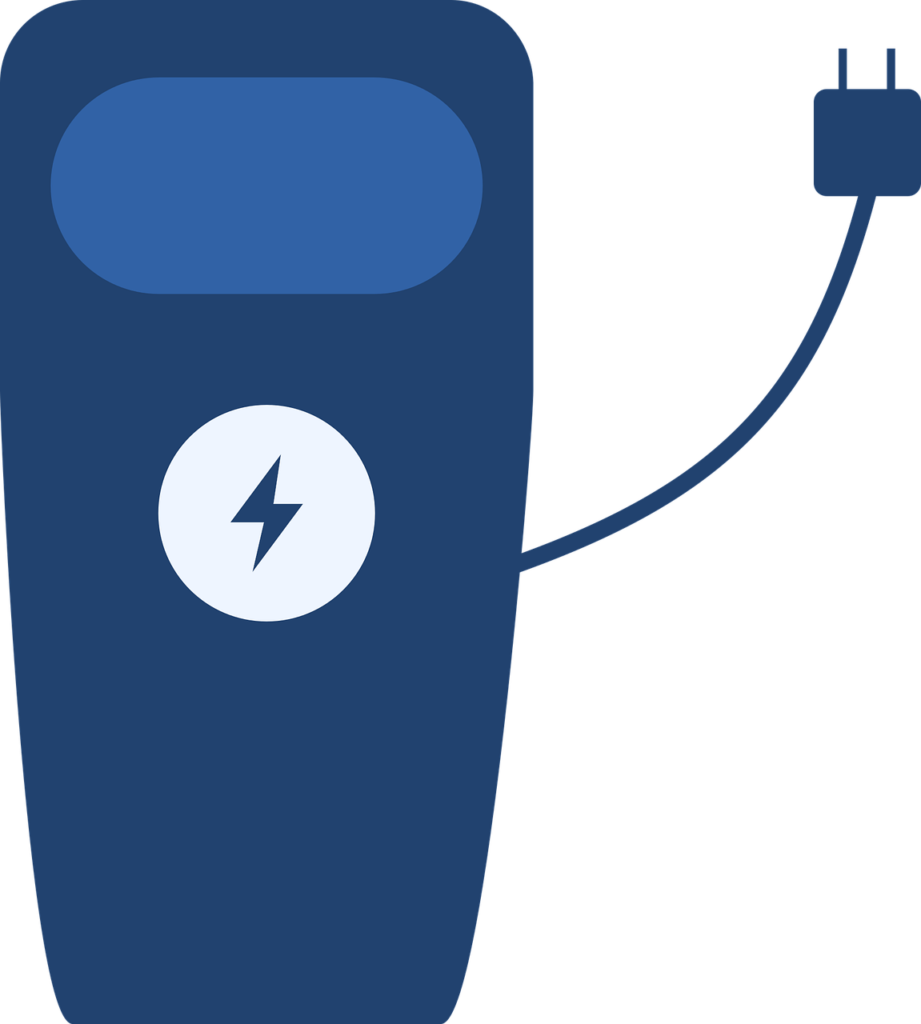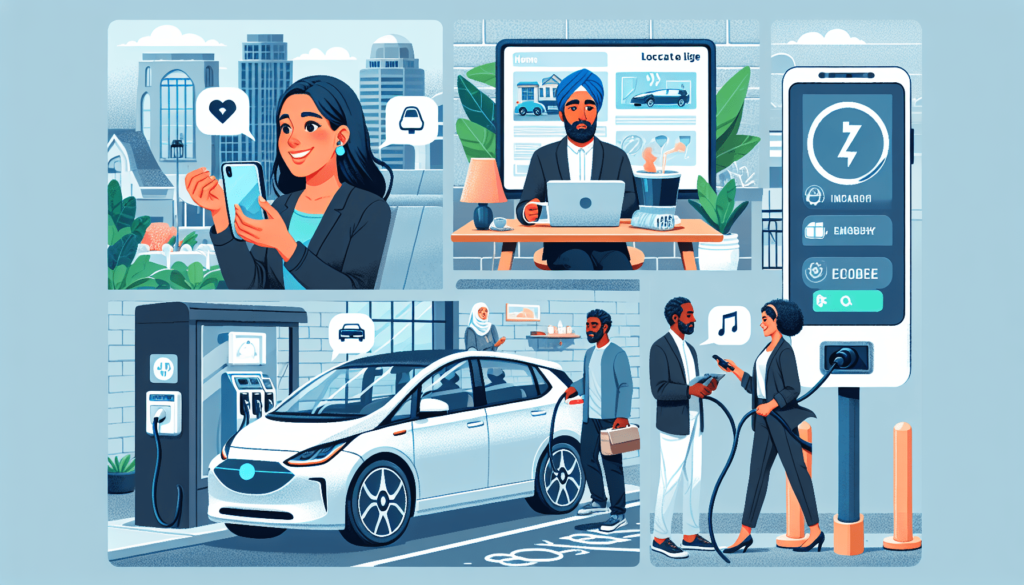Imagine being an electric vehicle owner and effortlessly incorporating charging into your daily routines. No longer burdened by the inconvenience of filling up at gas stations, you have the freedom to seamlessly charge your vehicle at home or wherever you go. With the increasing prevalence and accessibility of charging infrastructure, electric vehicle owners are finding innovative ways to integrate charging seamlessly into their lives. In this article, we will explore the various strategies and solutions that electric vehicle owners have adopted to ensure a smooth and efficient charging experience, allowing them to fully embrace the sustainable and exciting world of electric mobility.
Planning Charging Locations
Researching public charging stations
When it comes to planning for electric vehicle (EV) charging, one of the first steps is to research the availability of public charging stations in your area. There are various online platforms and mobile apps that can help you identify the nearest charging stations, including the types of connectors compatible with your vehicle. By familiarizing yourself with the locations and availability of public charging stations, you can easily map out your route and ensure that you have access to charging facilities whenever you need them.
Installing home charging equipment
Installing a home charging equipment, such as Level 1 or Level 2 chargers, is a convenient and reliable way to ensure you can charge your EV efficiently. Level 1 chargers are typically the standard charging option that comes with your EV and can be plugged into a standard household outlet. While Level 1 chargers are slower compared to Level 2 chargers, they are ideal for overnight charging when you have several hours to spare. On the other hand, Level 2 chargers offer faster charging times and can be installed directly in your home’s electrical system, requiring a dedicated circuit. This option is beneficial for those who require quicker charging times or have longer commutes.
Identifying charging stations at workplaces
For individuals who commute to work, it is essential to identify the charging stations available at your workplace. Many employers are now recognizing the benefits of providing EV charging infrastructure, either as a standard amenity or through partnerships with charging network providers. By identifying the charging stations at your workplace, you can take advantage of the opportunity to charge your EV while you are working, saving time and ensuring that your vehicle is ready for your daily commute.

This image is property of pixabay.com.
Predicting Charging Needs
Calculating daily driving distance
To ensure that you have enough charge to meet your daily driving needs, it is crucial to calculate your daily driving distance. This can be easily determined by keeping track of the mileage covered each day or by using the trip odometer feature available in most electric vehicles. By knowing your daily driving distance, you can estimate the amount of charge needed to reach your destination and plan your charging accordingly.
Estimating charging time requirements
In addition to calculating your daily driving distance, it is also essential to estimate the charging time required to replenish your EV’s battery. The charging time will depend on the type of charger you are using, the battery capacity of your vehicle, and the current state of charge. By referring to your vehicle’s specifications and understanding the charging capabilities of your charger, you can estimate how long it will take to fully charge your vehicle and plan your charging accordingly.
Considering charging infrastructure availability
Another factor to consider when predicting your charging needs is the availability of charging infrastructure along your regular routes. While public charging stations are becoming more accessible, there may still be areas without convenient charging options. By considering the availability of charging stations, you can plan alternative routes or schedule charging stops at stations located along your journey. This way, you can ensure that you have a reliable charging infrastructure to support your travel plans.

This image is property of pixabay.com.
Optimizing Charging Times
Taking advantage of off-peak electricity rates
To optimize the cost of charging your electric vehicle, it is beneficial to take advantage of off-peak electricity rates. Many utility companies offer discounted rates during specific hours when overall electricity demand is lower. By scheduling your charging sessions during these off-peak hours, you can significantly reduce your charging costs. It is important to check with your utility provider to understand their off-peak hours and ensure that your home charging equipment is capable of scheduled charging.
Scheduling charging during non-busy hours
In addition to off-peak charging, scheduling your charging sessions during non-busy hours can also help you optimize your charging times. For example, if you have flexibility in your daily routine, you can schedule your charging sessions during times when there is less demand on the local electrical grid. This not only ensures faster charging times but also helps avoid potential grid congestion during peak hours. By aligning your charging schedule with non-busy hours, you can maximize the efficiency of your charging sessions.
Utilizing smart charging technology
Smart charging technology offers advanced features that can further optimize your charging times. These technologies allow you to schedule charging sessions remotely, monitor your charging progress, and take advantage of features such as load balancing. Load balancing technology evenly distributes the electrical load within your home, ensuring that multiple appliances and devices can operate simultaneously without overloading the electrical circuit. By utilizing smart charging technology, you can not only optimize your charging times but also increase the overall efficiency of your home’s electrical system.

This image is property of pixabay.com.
Charging at Home
Using Level 1 chargers for overnight charging
Level 1 chargers are typically included with your electric vehicle and are designed for convenient overnight charging. These chargers can be plugged into a standard household outlet, providing a slow but steady charge to your vehicle’s battery. Overnight charging with a Level 1 charger is ideal for individuals who have limited daily driving distances or longer periods of time at home. While it may not offer the fastest charging times, it ensures that your vehicle is ready to go in the morning.
Installing Level 2 chargers for faster charging
For those who require faster charging times or have longer daily commutes, installing a Level 2 charger at home is a recommended option. Level 2 chargers provide a significantly higher charging rate compared to Level 1 chargers, allowing you to charge your vehicle faster. These chargers require installation by a professional electrician and often require a dedicated electrical circuit. With a Level 2 charger, you can reduce the charging time required to replenish your vehicle’s battery, providing increased convenience and flexibility in your daily routine.
Monitoring charging progress remotely
Many Level 2 charging stations come equipped with advanced features that allow you to monitor your charging progress remotely. Through mobile apps or online platforms, you can track the charging status, view charging histories, and even receive notifications when charging is complete. Remote monitoring not only provides convenience but also enables you to keep track of your charging habits and identify potential issues or inefficiencies. By staying informed about your charging progress, you can ensure that your electric vehicle is always ready for your next journey.

Utilizing Public Charging Stations
Finding nearby charging stations through apps
When you’re on the go and in need of a charging station, mobile apps can be a valuable tool in helping you find nearby charging stations. There are various apps available that provide real-time information on the location, availability, and charging speed of public charging stations. These apps often include user reviews and ratings, allowing you to make informed decisions about which charging stations to visit. By utilizing these apps, you can easily locate charging stations wherever you are and plan your route accordingly.
Checking station availability and status
Before heading to a public charging station, it is crucial to check the station’s availability and status to avoid any potential inconveniences. Some charging networks provide online platforms or apps that allow you to view real-time status updates, including whether a station is in use or out of service. By checking the availability and status of charging stations before your arrival, you can save time and ensure that you have a reliable charging option.
Understanding charging network memberships
Understanding the different charging network memberships is essential for maximizing your charging options at public stations. Various charging networks offer memberships with different pricing structures, access to exclusive charging stations, and other benefits. By researching and understanding the charging network memberships available in your area, you can choose the one that best suits your needs and offers the most convenient and cost-effective charging options.


